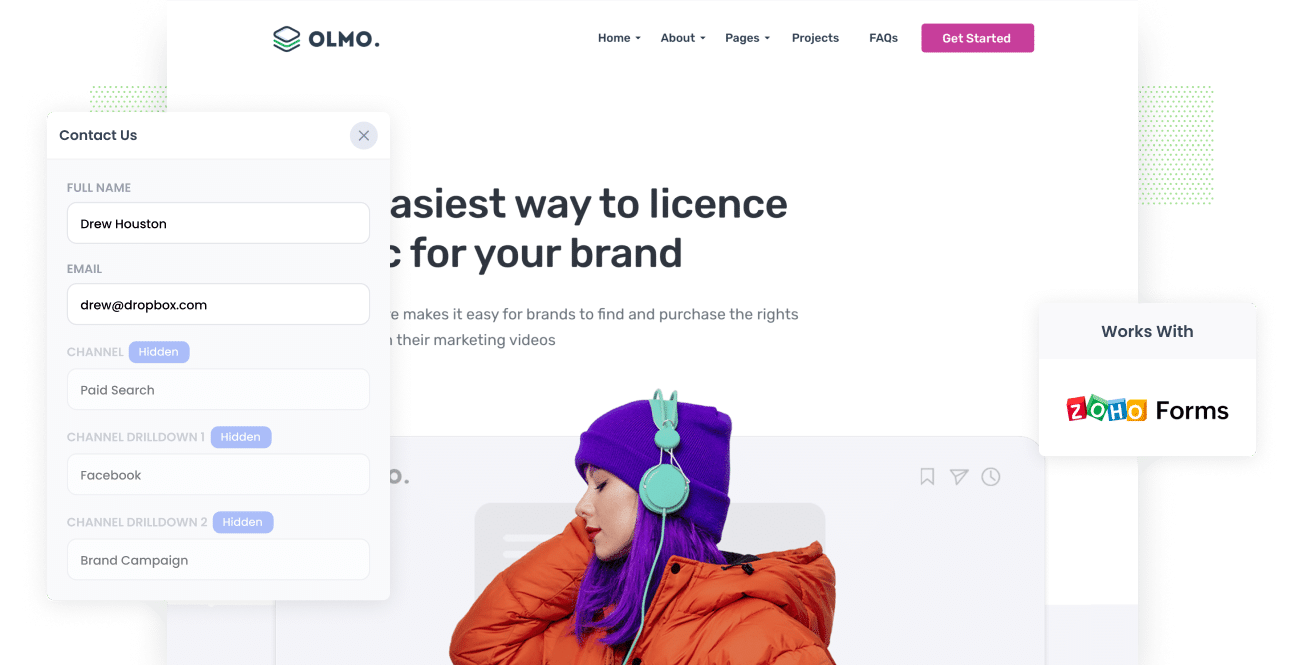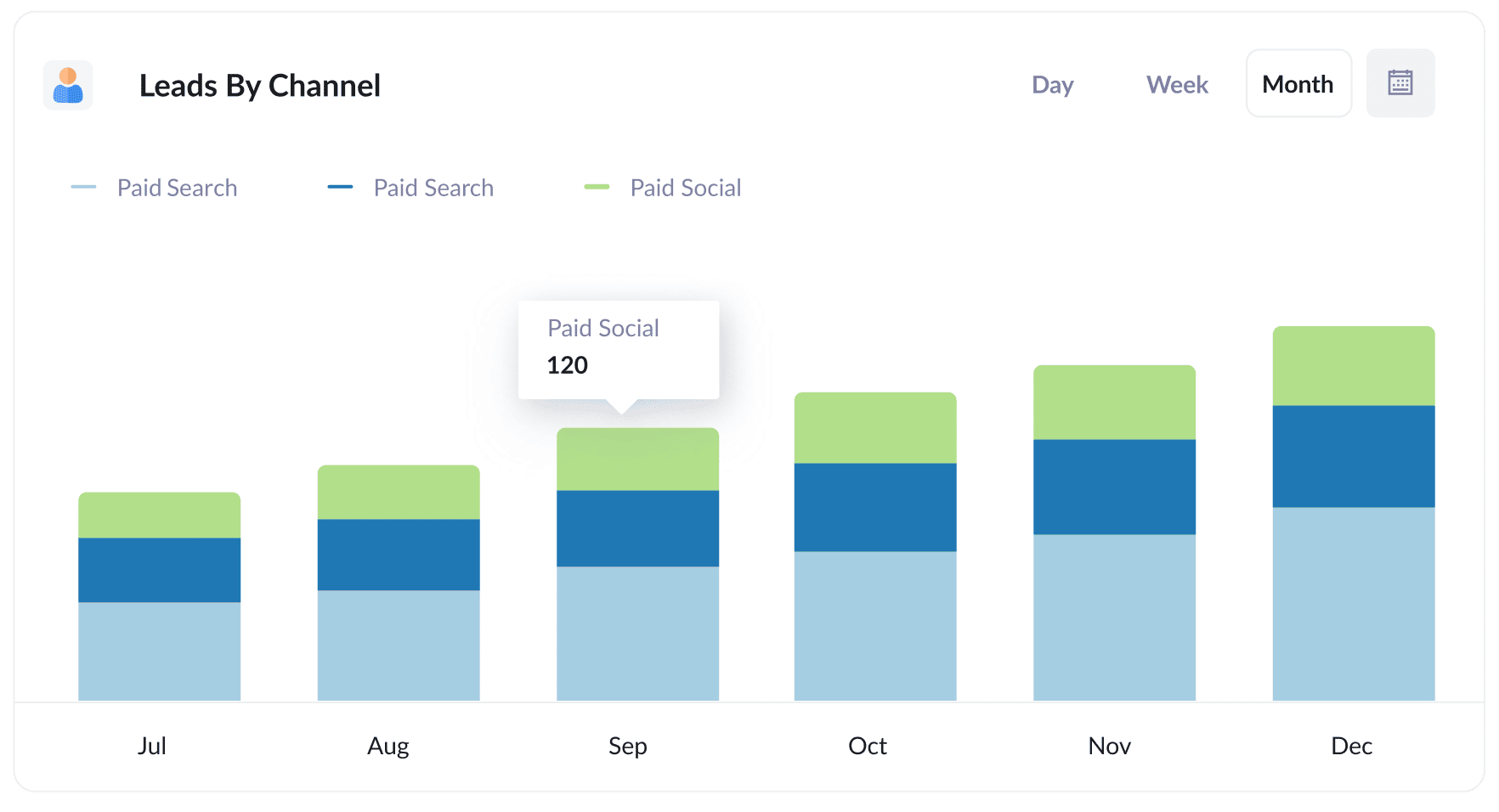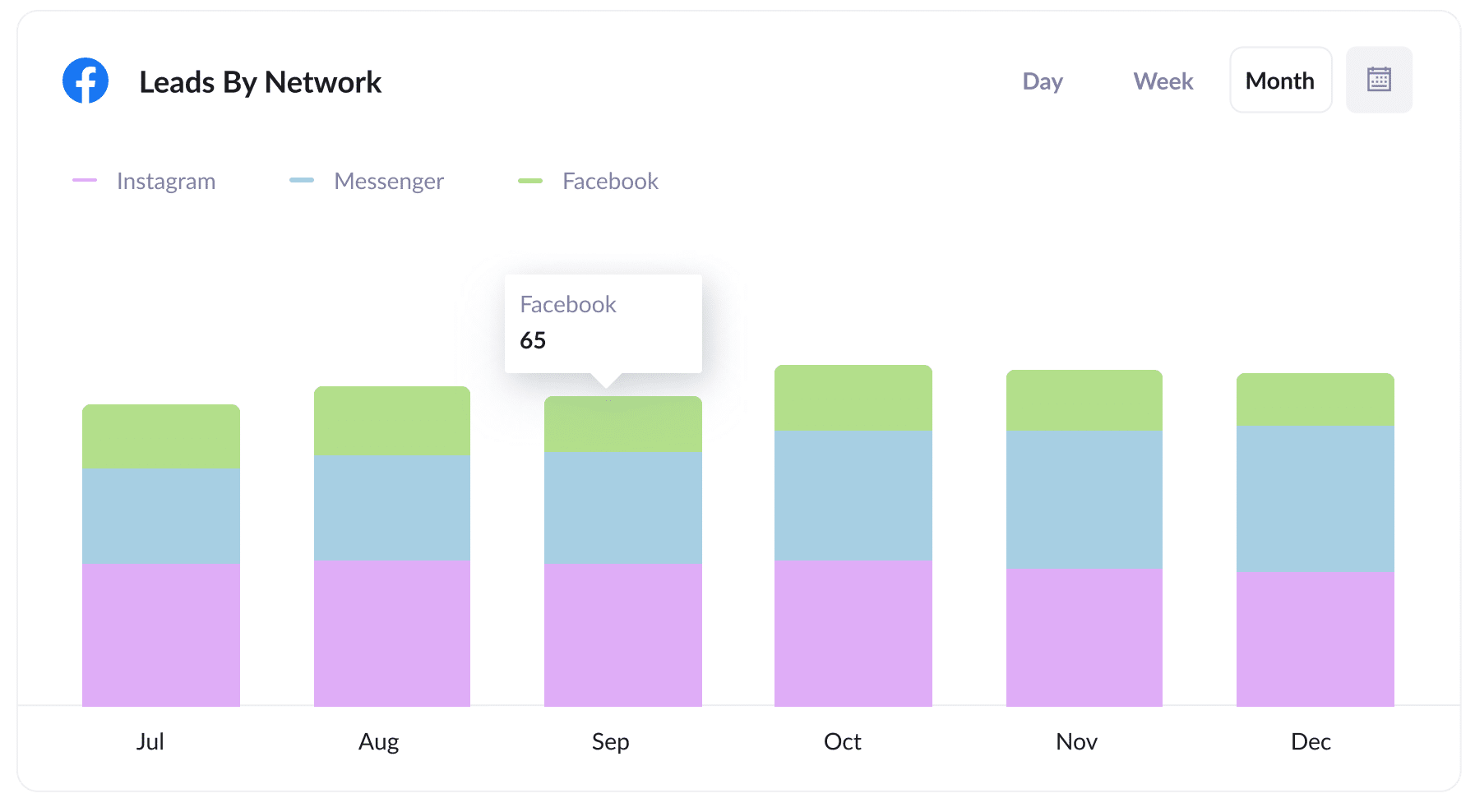The simplest way to capture Facebook Ads data in Zoho Forms
In this article, you'll learn how capture Facebook Ads data (like campaign, network, ad set, etc) with each Zoho Forms submission

Are you searching for a way to track the number of leads you get from your Facebook Ads?
What if there was a way to see in Zoho Forms the origins of every lead, right down to the actual campaign, ad set, and ad they clicked? I
Imagine the kind of insights and decisions you could make if you could see how many leads you are getting from each of your Facebook Ad campaigns. You could cut the underperforming ones, double on the high-perfomers and ultimately get more leads.
In this post, we’ll guide you on how to use Attributer to track the source of all your leads {including the ones from Facebook Ads) in Zoho Forms.
4 simple steps to capture Facebook Ads data in Zoho Forms
With Attributer, capturing Facebook Ads data in Zoho Forms is easy. Here’s how:
1. Add UTM parameters to your Facebook Ads

To kick things off, you first need to add UTM parameters to each of your active Facebook Ads.
UTM parameters are extra text you add at the end of the URL you send to people from your campaigns. Analytics tools like Attributer then use this to help understand where visitors have come from.
Let’s say the page you want to send someone is attributer.io/integrations/zoho-forms; then your final URL with added UTM parameters can look like this:
attributer.io/integrations/zoho-forms?utm_medium=paidsocial&utm_source=facebook&utm_campaign=brand-campaign
You can put whatever information you want in UTM parameters, but the general best practice for Facebook Ads would be:
- UTM Medium = Paid social
- UTM Source = Facebook
- UTM Campaign = The name of your campaign
- UTM Term = The name of the ad set the ad belongs to
- UTM Content = The specific ad
Tagging your URLs with UTM parameters is easy and there are free tools available on the web that can help you build them.
2. Install Attributer on your website

Attributer is basically a small piece of code that you install on your website.
Every time a user lands on your site, Attributer goes through a bunch of technical information on how this user arrived at your site and uses it to determine the user’s origin (i.e., Facebook Ads).
Once the user completes a form on your site, Attributer writes the attribution data into hidden fields you will add to your forms. From here, the Facebook Ads data, alongside the lead’s name, email, etc., will be captured by Zoho Forms.
Placing Attributer on your site is easy. After signing up for a 14-day free trial, you’ll be provided with a small snippet of code you need to add to your site by following these instructions.
3. Add hidden fields to your forms

The third step is adding some hidden fields to your lead capture forms. You use these forms to gather information from your site visitors. The hidden fields you need to add to your forms are the following:
- Channel
- Channel Drilldown 1
- Channel Drilldown 2
- Channel Drilldown 3
- Channel Drilldown 4
- Landing Page
- Landing Page Group
Adding hidden fields to Zoho Forms is straightforward. Simply drag and drop 7x 'Single Line' fields into your form and then select the 'Hide Field' options from the field properties menu. You can see further instructions here.
4. Attributer writes the Facebook Ads data into the hidden fields and it’s captured by Zoho Forms

The moment a user lands on your site from your Facebook Ads, Attributer captures the UTM parameters and stores them in the user’s browser so they won’t be lost as the user clicks around your site.
Once the user submits a form on your site, Attributer will pass the Facebook Ads data into the hidden fields on the form and the data will be captured with the lead’s name, email, etc. in Zoho Forms
What you can do with the data
After the Facebook Ads data has been captured in Zoho Form, you can send it to different platforms using Zoho’s native integrations or third-party tools like Zapier:
- Send it to your CRM - By sending the data from Zoho Forms into Zoho CRM (and/or other CRM tools), you can build reports that provide answers on the number of leads your Facebook Ads made, how many of these leads have turned into customers, the total revenue generated, and many more.
- Pass it to a spreadsheet - By using a Zoho Forms integration or a 3rd-party tool like Zapier , you can send the data into a Zoho Sheet or Google Sheet. Once the data has reached the spreadsheet, you can perform basic analysis there or integrate analytics tools like Zoho Analytics or Google Data Studio to create more advanced reports.
- View it in your email - If you do not use a CRM and simply respond to new leads when you receive a notification in your inbox, you can add the Facebook Ads data to the lead notification email so you can know where each lead is coming from.
- Transfer it to your billing platform - If you have connected a billing platform like Square or PayPal to Zoho Forms, you will be able to send the Facebook Ads data to these platforms and use the data to run reports that inform you of the total revenue your ads have generated.
Why use Attributer
Why opt for Attributer when other methods exist to capture Facebook Ads in Zoho Forms?
Here are some of its main advantages:
Captures other attribution information
As well as capturing the source of leads from your Facebook Ads, Attributer also captures details about the leads who arrive at your site through other channels like Organic Social, Organic Search, Direct, or Referral. With this, you will be able to be informed about the origins of ALL your leads and customers, not just those from your Facebook Ads.
Remembers the data
Attributer keeps the UTM parameters in a cookie in the user’s browser, which means it doesn’t matter which page the user completes a form on; the UTM parameters will always be sent through. This way, you’ll have more accurate data on the amount of leads and customers you get from your Facebook Ads.
Cleans the data
Designed to recognize discrepancies in UTM usage, such as using utm_source=facebook in some campaigns and utm_source=facebook.com in others, Attributer would assign these leads to the correct channel (Paid Social in this case) despite the inconsistencies. With this, you’ll be sure you have accurate data.
Captures landing page data
In addition to capturing Facebook Ads data, Attributer also captures the landing page URL (e.g., https://attributer.io/blog/capture-utm-parameters-zoho) and landing page group (e.g., /blog). Having this data can let you monitor your content’s performance, such as your blog, as well as drill down and see the individual content pieces (I.e. blog posts) that are generating the most leads.
3 example reports you can run to understand the performance of your Facebook Ads campaigns
Once you start capturing Facebook Ads data in Zoho Forms using Attributer and sending this data into a CRM or spreadsheet, then you can create reports like the following:
1. Leads by channel

You can create reports like the one above because Attributer captures the source of all your leads and not just those from your Facebook Ads. The graph above displays the number of leads broken down by channel.
This data can provide insight into your Facebook Ads’ performance compared to your other channels, which can help you make more strategic decisions regarding where to spend your marketing resources.
2. Leads by Network

If you are using Facebook Ads, there's a pretty good change you have ads running on the different networks (like Messenger, Facebook, Instagram, etc.) that Facebook owns and offers.
If so, you can run a similar report above to understand which networks generate the most leads.
This data can help you understand which social app is most effective for your ads and can enable you to double down on what’s working and get improved results.
3. Leads by campaign

The report above provides data on the leads you get from Facebook every month, broken down by the campaign they came from.
This data can inform you about the campaigns that are actually generating leads and not just generating clicks and visitors that don’t convert. This can ultimately help you improve your strategy and get more leads.
Wrap up
It’s easy to capture the UTM parameters behind your Facebook Ads with Attributer. And by doing so, you can see how many leads you’re ads are generating, which campaigns they’re coming from, and more.
Moreover, it can also provide information on leads that come from other channels. This way, you can track the source of ALL your leads, not just those from Facebook Ads. Ultimately, it can help you make informed decisions on where to invest in growing your business.
The highlight of it all is it’s free to get started. Start your free trial today and see if Attributer is for you.
Get Started For Free
Start your 14-day free trial of Attributer today!

About the Author
Aaron Beashel is the founder of Attributer and has over 15 years of experience in marketing & analytics. He is a recognized expert in the subject and has written articles for leading websites such as Hubspot, Zapier, Search Engine Journal, Buffer, Unbounce & more. Learn more about Aaron here.
